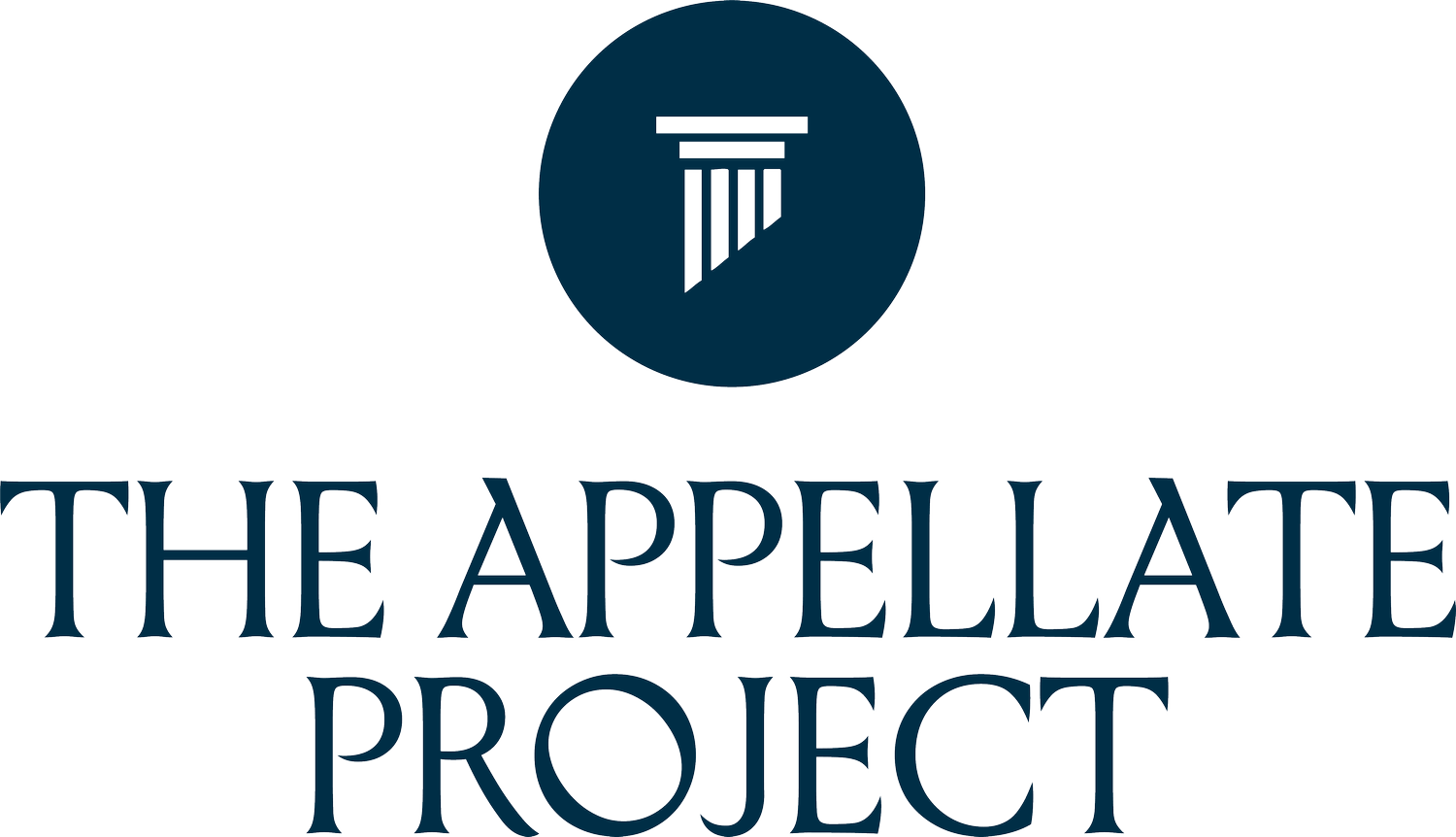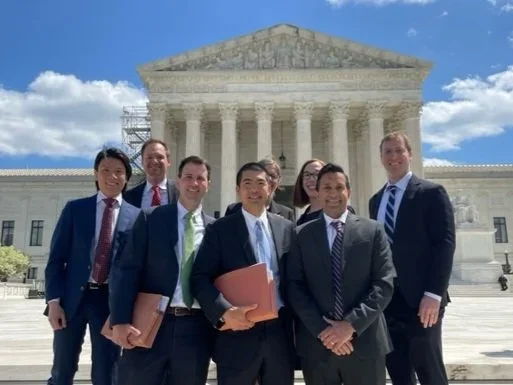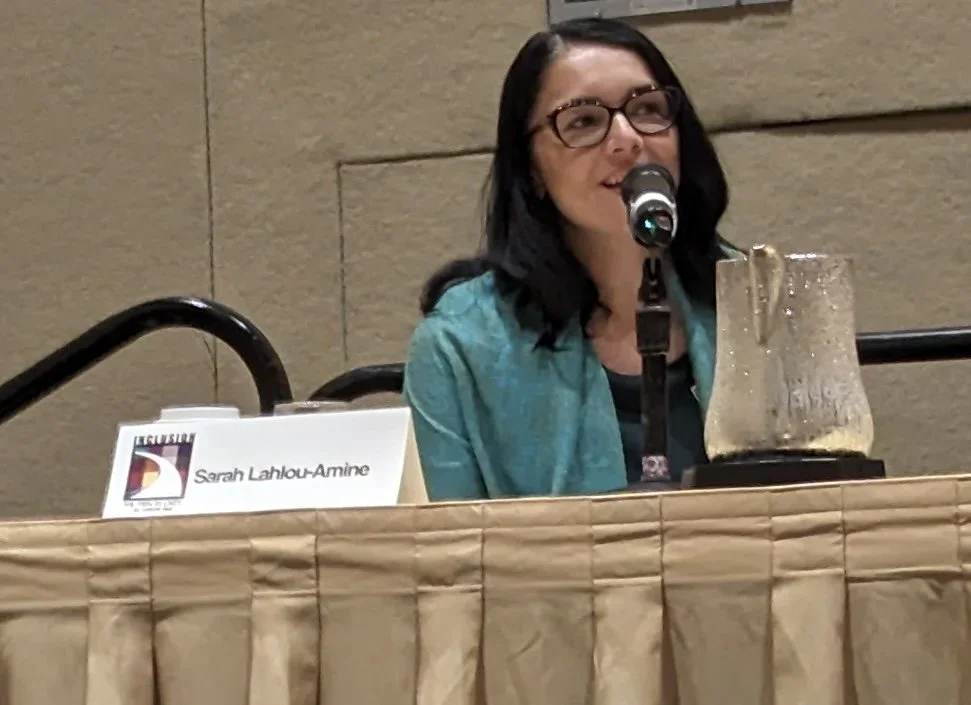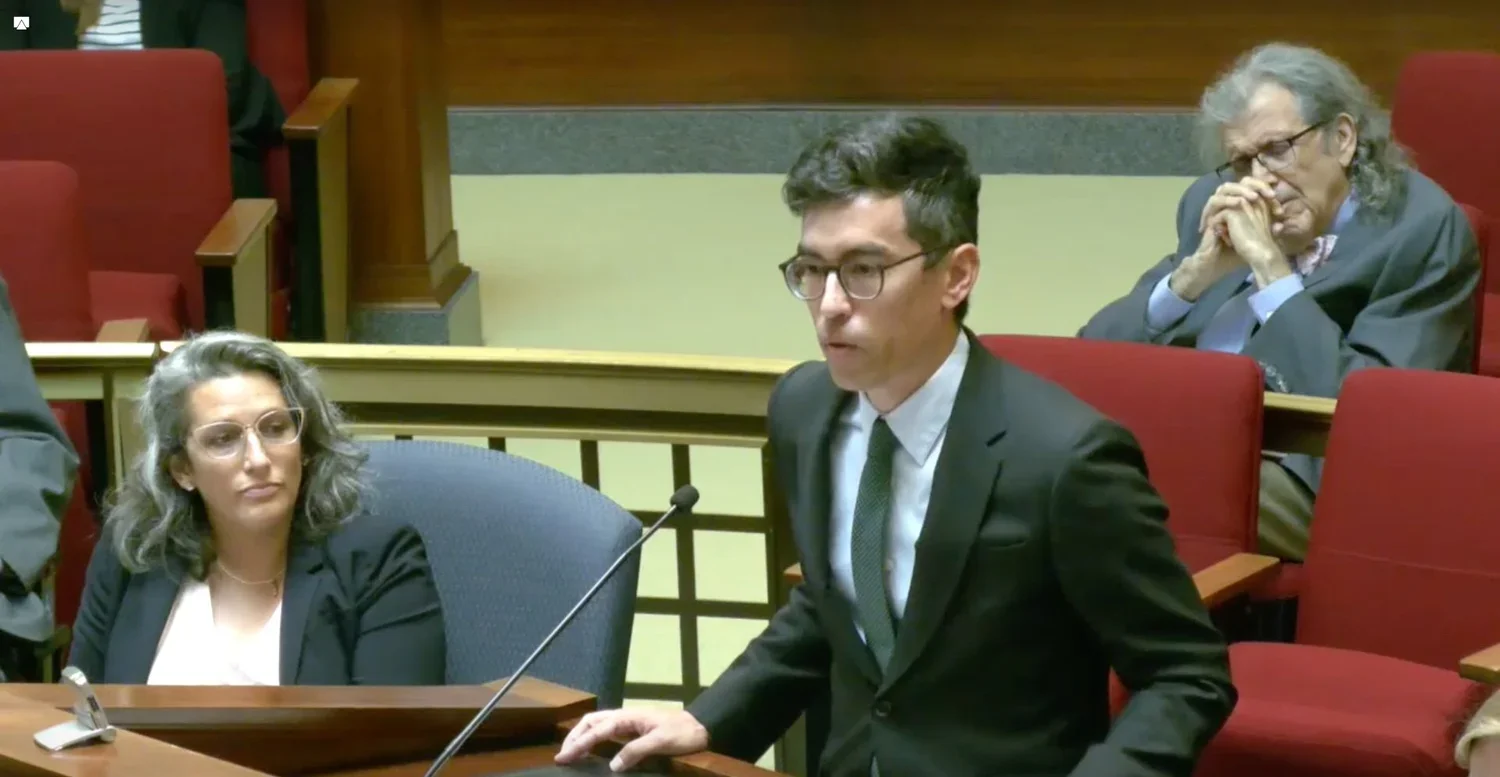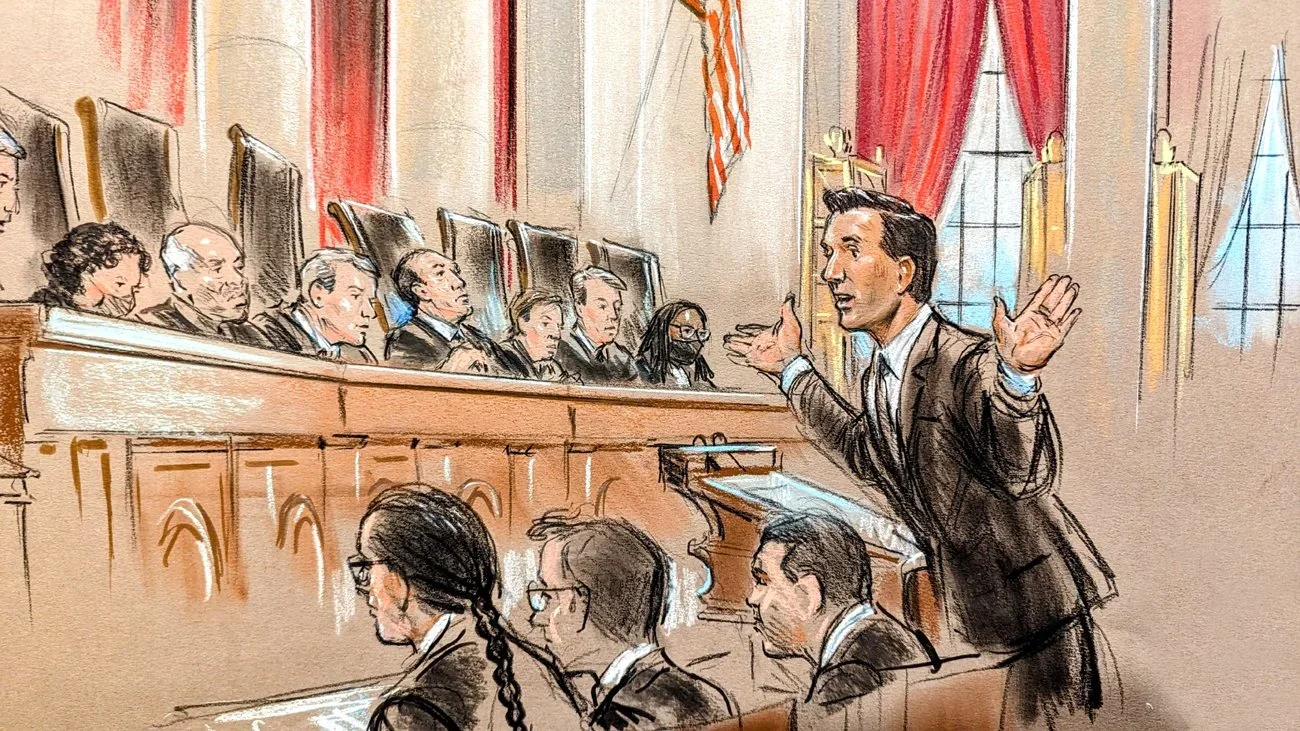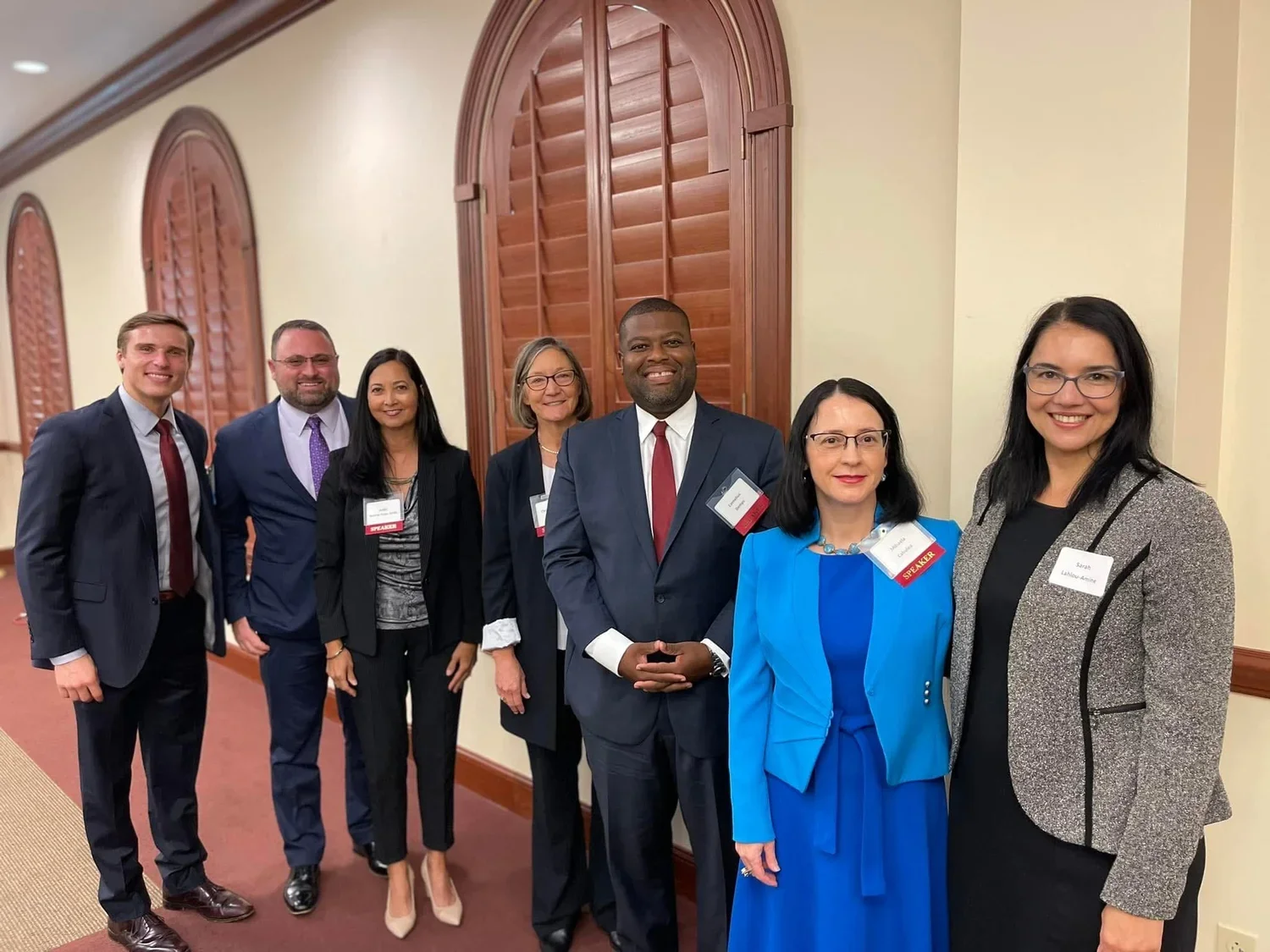How I Got Here: Journeys in Appellate Law
In celebration of Asian American and Pacific Islander (AAPI) Heritage Month, The Appellate Project is proud to share the journeys of five of our mentors—advocates whose stories reflect resilience, representation, and the power of mentorship.
Their reflections remind us that there’s no single path into appellate advocacy. The road is often shaped by identities and upbringings, unexpected inspiration, and the people who opened doors along the way. This month, we honor the voices of Christopher Hu, Sarah Lahlou-Amine, Ryan Park, Ashwin Phatak, and Pratik Shah, and the lessons their journeys offer to future leaders.
Chapter 1: Rooted in a Sense of Justice
For Lahlou-Amine, her lived experience sparked a career-long commitment to improving justice through advocacy. “Having experienced financial adversity growing up,” she shared, “I was eager to learn how the justice system works for those of limited means and how it can be improved to better serve our communities. I saw the potential for using my voice to advocate for others and for developing solutions through well-informed policies and programs.”
“I saw the potential for using my voice to advocate for others and for developing solutions through well-informed policies and programs.”
Park also reflected on how his upbringing shaped his approach to the law. “I was born and raised in Minnesota on the outskirts of the Twin Cities, where my parents eventually settled after immigrating from South Korea,” he recalled. “It was a warm and welcoming community, but there weren’t a lot of people around who looked like us.” That environment instilled lessons he still carries. “Growing up in Minnesota kind of hardwires you to believe that everyone is worthy of being treated with kindness and respect. Law can be a stressful, contentious profession, but I’ve tried my best to carry these values with me as I’ve made my way as a lawyer.”
Shah, who grew up in a working-class neighborhood in Akron, Ohio, described a similar duality. “Although for most of my childhood I was the only South Asian kid in my school, we were part of a small but tightly knit group of immigrant Indian families in the broader area,” he said. “That experience allowed me to develop a strong sense of cultural identity and bridge together my two worlds—providing a foundation that helped me navigate spaces throughout my career where I didn’t look like others around me.”
Chapter 2: Finding the Spark
Few of the mentors we spoke with entered law school set on appellate work—but each found a moment of clarity when the pieces fell into place.
For Hu, the possibilities of appellate practice came into focus after law school began.
“I was vaguely aware of appellate work as a career path,” he said, “but even after my experience in the Supreme Court clinic, I didn’t have a concrete sense of how to make it happen, other than working for a big-firm appellate practice in Washington, DC, which didn’t interest me because I wanted to stay on the West Coast. It was only through clerking and then my first few years of practice that I came to understand that there are many ways to be an appellate lawyer.”
Phatak found clarity in a high-stakes student competition. “The most notable appellate experience during law school was participating in the Ames Moot Court Competition,” he said, “where I had the privilege of arguing in the finals before both the late Justice Ruth Bader Ginsburg and then-Judge and former Attorney General Merrick Garland. Not only did that experience solidify my interest in appellate litigation, but I also met some of my best friends in the process.”
Shah's path was shaped by a surreal summer externship moment. “One day that summer, Judge [Charles] Breyer and [now] Judge Chhabria conspired to call me in for a meeting about a memo I had written on some due process issue (even though I hadn’t yet taken constitutional law),” he said.
“I vividly recall Judge Breyer saying he hadn’t yet had a chance to review the memo closely, but that his older brother had done so and wanted to ask me some questions. I then turned my head and (much to my shock) see Justice Breyer sitting on the sofa with a copy of my memo in hand.” That moment stuck with him: “That experience—what I fondly consider my first Supreme Court argument—planted the seed for later pursuing a clerkship with Justice Breyer.”
Chapter 3: No One Does It Alone
Mentorship, access, and community came up again and again in these interviews—especially for those navigating a field that still has work to do when it comes to inclusion.
“I think that representation is critical so that the appellate bar reflects the diversity of the population it represents,” said Phatak. “More diversity in courts and among practitioners will only improve access to justice and allow all perspectives to be represented at the highest levels of the legal profession.”
Lahlou-Amine encouraged law students of color to stay grounded in their own worth. “If you encounter spaces where you don’t feel like you belong, those spaces are probably due for a change,” she said. “Your presence, participation, and leadership help bring about that change, benefitting everyone.”
And Park reminded us that support can come from anywhere—and that everyone benefits when it’s paid forward. “None of my most cherished professional mentors have been Asian-American,” he said. “I likewise have tried my best to help talented and motivated young people regardless of whether they share my love of kimchi. Everyone needs a helping hand.”
The Next Chapter
As we celebrate AAPI Heritage Month, these reflections are a powerful reminder: representation is built through community, opportunity, and a commitment to lifting as we rise.
At The Appellate Project, we’re proud to support the next generation of appellate leaders—many of whom are already blazing new trails, with stories uniquely their own.
Know an appellate leader whose story should be featured? Reach out to mentorship@taplaw.org to let us know.
